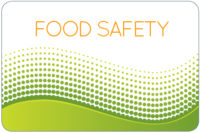The recent, devastating outbreak of a virulent strain of E. coli O104:H4 (STEC O104:H4) in Europe has resulted in widespread fear and unfounded accusations against an assortment of food product manufacturers. At the time of this writing, the outbreak had sickened more than 3,000 people and was one of the worst foodborne illness outbreaks in history.
It has been learned, however, that the Hamburg strain most likely resulted from a genetic recombination of two distinct types of E. coli (one of which only occurs in humans). This recombination (or mutation) resulted in a highly pathogenic strain never before seen.
In turn, the most likely source was an ill employee at a facility in Germany where sprouts were produced. While this can be viewed, in many ways, as a frightening development, it is, in some sense, good news. It means that food companies can take immediate measures at the processing level to avoid such an outbreak from originating from their own establishments.
Ultimately, the emergence of this new pathogenic strain demonstrates the need to be constantly vigilant for the curveballs Mother Nature may throw when we least expect it. The recent industry-wide decrease in foodborne illnesses generally remains is a great testament to the work industry has done. But we can never let our guard down. The Hamburg Outbreak should serve as notice for all companies to re-evaluate their sanitation measures. This sort of disaster can be avoided — or at least substantially mitigated — by refining and enforcing stricter sanitation standards.
Indeed, STEC O104:H4 is not the first outbreak associated with human-to-product transmission. In fact, many foodborne illnesses are caused by human contamination. This is perhaps most common in homes and restaurants, but it can also occur in processing facilities. Increasing the number of hand-washing stations is a simple and relatively inexpensive way to immediately decrease the likelihood of human-to-product illness transmission.
We live in a microbe-rich world, and unfortunately, the food industry is the place where humans and pathogens are most likely to come into contact. Maintaining effective sanitation practices is not only relatively straightforward and simple, but also the best way to avoid getting your hands dirty with outbreaks and recalls.
Shawn K. Stevens defends and counsels meat companies in foodborne illness matters throughout the United States.
Mr. Stevens also assists industry clients with regulatory compliance, recall planning, crisis management and other issues in advance of and following major food-product recalls. Additional information about his practice can be found at www.defendingfoodsafety.com.




Report Abusive Comment